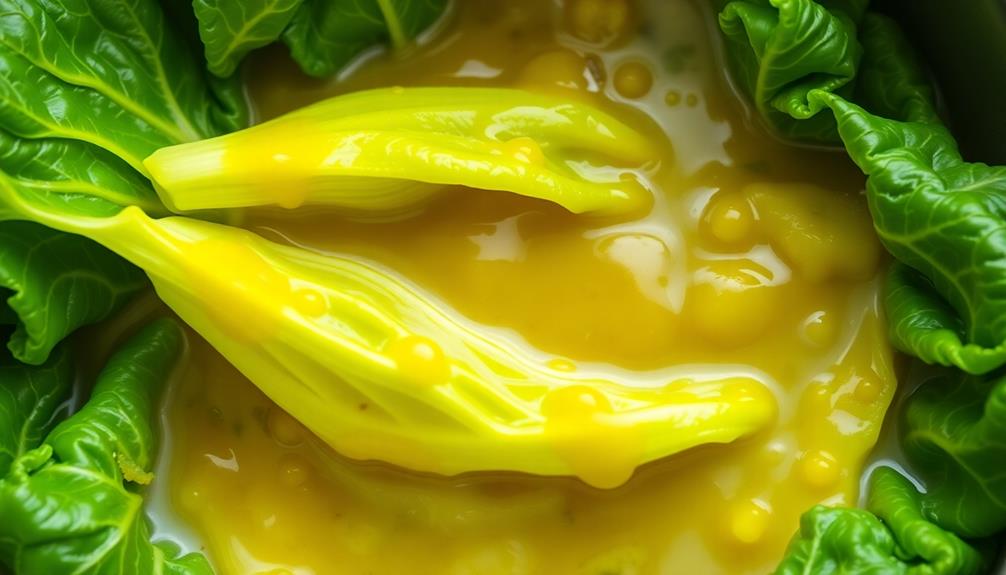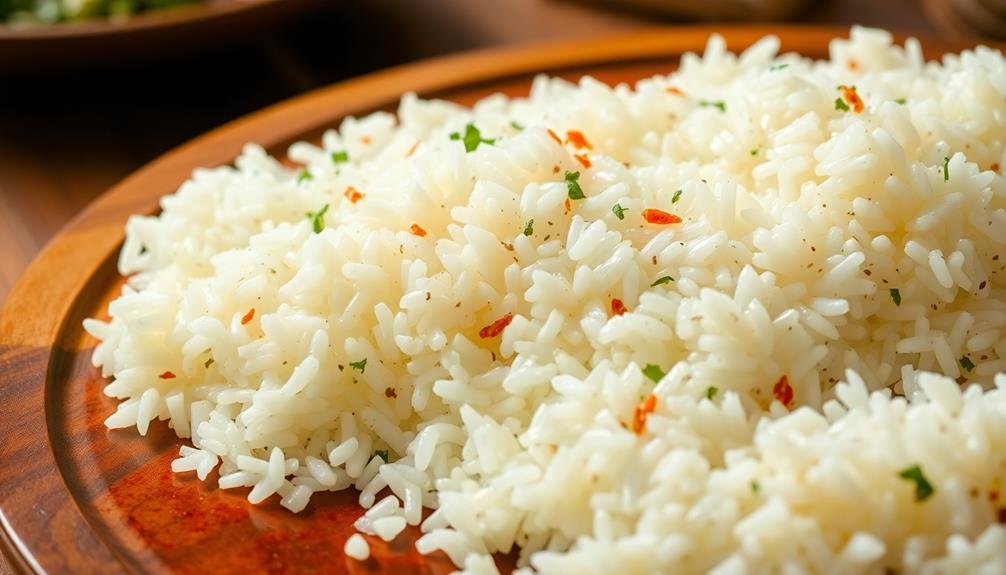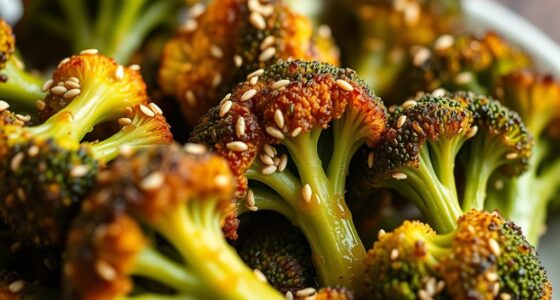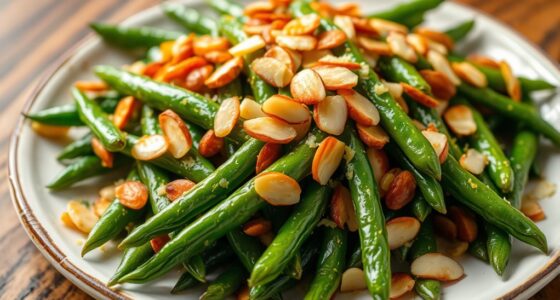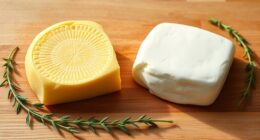Butter-braised cabbage is a melt-in-your-mouth side dish that'll have you craving it for every meal. Its rich, buttery flavor and tender texture transform humble cabbage into a comforting and nourishing delight. This simple recipe highlights the natural sweetness of the vegetable, making it an irresistible accompaniment to a variety of main courses, from roasted meats to hearty stews. With just a few ingredients and minimal preparation, you can elevate your meals with this exceptional side that's sure to delight your taste buds. To dive deeper into the history and cooking insights of this family-favorite dish, read on.
Key Takeaways
- Butter-braised cabbage is a flavorful, tender, and comforting side dish that can be easily incorporated into various meals.
- The slow-cooking process in butter and broth enhances the natural sweetness and softens the cabbage, creating a melt-in-your-mouth texture.
- Cabbage is a nutritious vegetable, rich in vitamins, minerals, and fiber, making it a healthy addition to the diet.
- The simple recipe with just a few ingredients, like butter, broth, salt, and pepper, allows the natural flavors of the cabbage to shine.
- Butter-braised cabbage pairs well with a variety of main dishes and can be served hot or at room temperature, making it a versatile side option.
History
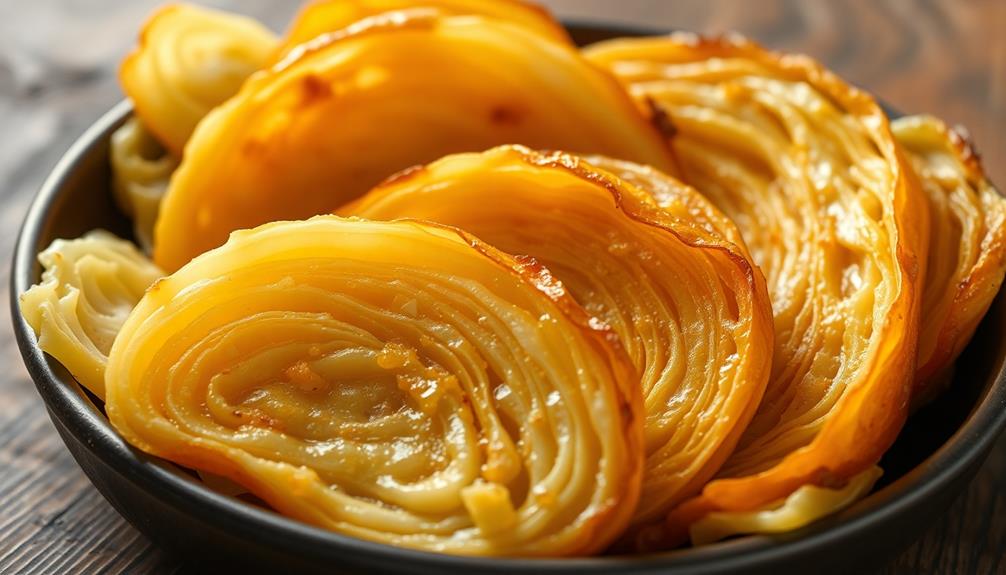
Cabbage has been a staple vegetable in many cuisines for centuries. This hardy, nutrient-dense plant has been cultivated since ancient times, with evidence of its use dating back to the ancient Egyptians, Greeks, and Romans.
Throughout history, cabbage has provided an affordable, accessible source of nourishment, especially for those with limited resources. Its popularity aligns with the principles of budgeting for health, as it's both nutritious and economical.
In medieval Europe, cabbage became a dietary staple, featuring prominently in peasant dishes and eventually making its way into the kitchens of the aristocracy. As trade routes expanded, different varieties of cabbage were introduced to new regions, allowing for diverse preparations and flavors to emerge.
Sauerkraut, for instance, was popularized by German immigrants, while Korean kimchi showcases the vegetable's versatility in Asian cuisine.
Today, cabbage remains a beloved ingredient, prized for its versatility, health benefits, and ability to take on diverse flavors. From simple slaws to hearty braises, this humble vegetable continues to delight and nourish people worldwide.
Recipe
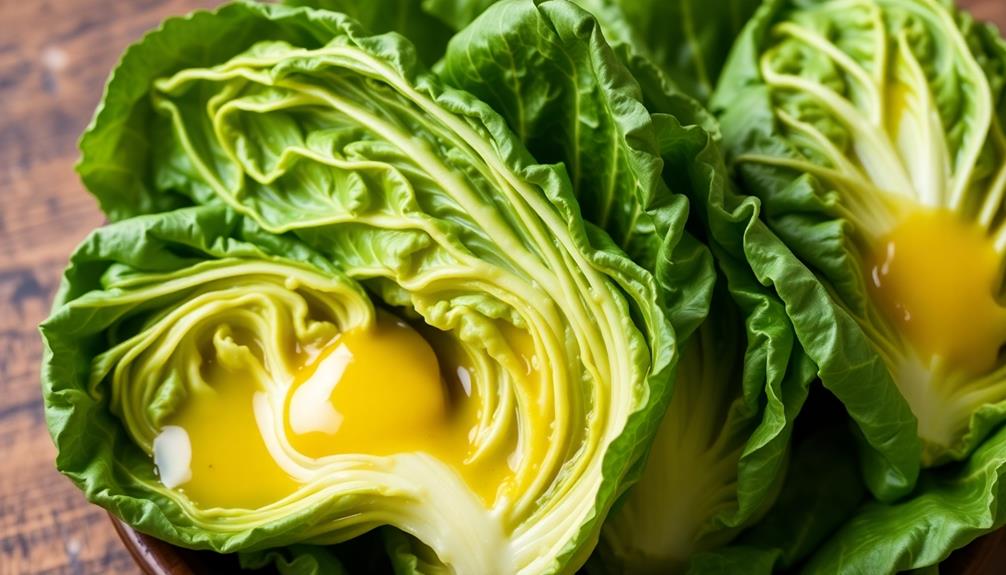
Butter-Braised Cabbage is a simple yet flavorful side dish that showcases the natural sweetness of cabbage. This comforting recipe is a great way to enjoy the versatile vegetable in a new and delightful way, making it an excellent choice for those looking to incorporate more nutritious vegetables into their meals, as recommended for a gout-friendly diet.
The key to achieving the perfect texture for this dish is to slowly braise the cabbage in a mixture of butter and broth. This gentle cooking method allows the cabbage to become tender and infused with the rich, savory flavors of the butter.
Ingredients:
- 1 medium head of green cabbage, cored and sliced into 1/2-inch thick ribbons
- 4 tablespoons unsalted butter
- 1 cup low-sodium chicken or vegetable broth
- 1 teaspoon salt
- 1/2 teaspoon freshly ground black pepper
Instructions:
Melt the butter in a large skillet or Dutch oven over medium heat. Add the sliced cabbage and stir to coat the pieces with the melted butter.
Pour in the broth, season with salt and pepper, then cover and cook, stirring occasionally, until the cabbage is very tender, about 30-40 minutes.
To ensure the best results, be patient and let the cabbage cook slowly. The longer cooking time allows the flavors to meld and the cabbage to develop a sweet, almost caramelized texture.
Serve the butter-braised cabbage warm, as a delightful side dish to complement a variety of main courses.
Cooking Steps
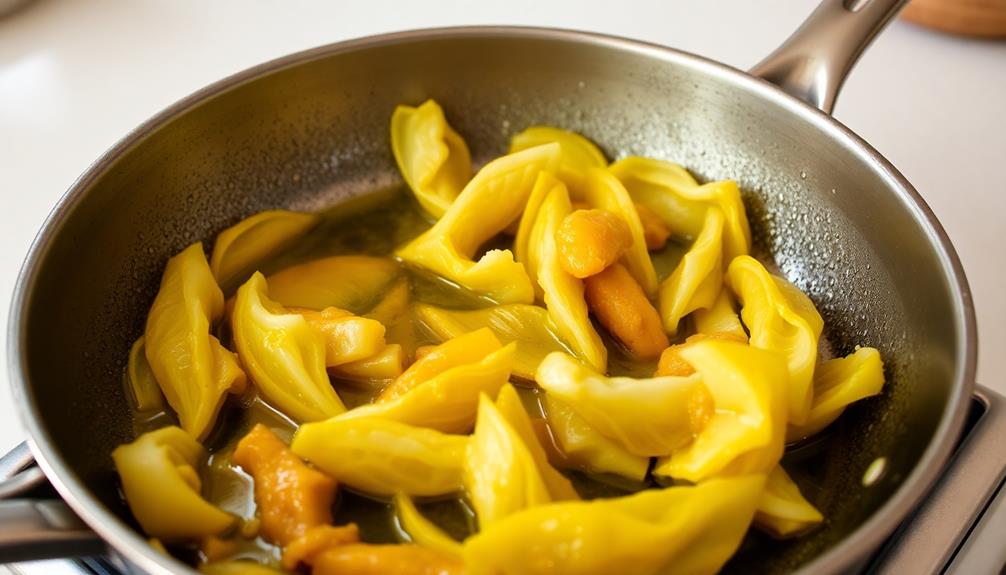
Slice the cabbage into thin strips and get ready to braise it in butter. The creamy texture of butter will enhance the flavor of the cabbage, making it a delightful side dish.
Melt the butter in a skillet, then add the cabbage, cover, and let it simmer until it's tender. Be sure to use airtight containers to store any leftovers for optimal freshness.
Before serving, don't forget to garnish it with some fresh parsley for a pop of color and flavor.
Step 1. Slice Cabbage Into Thin Strips
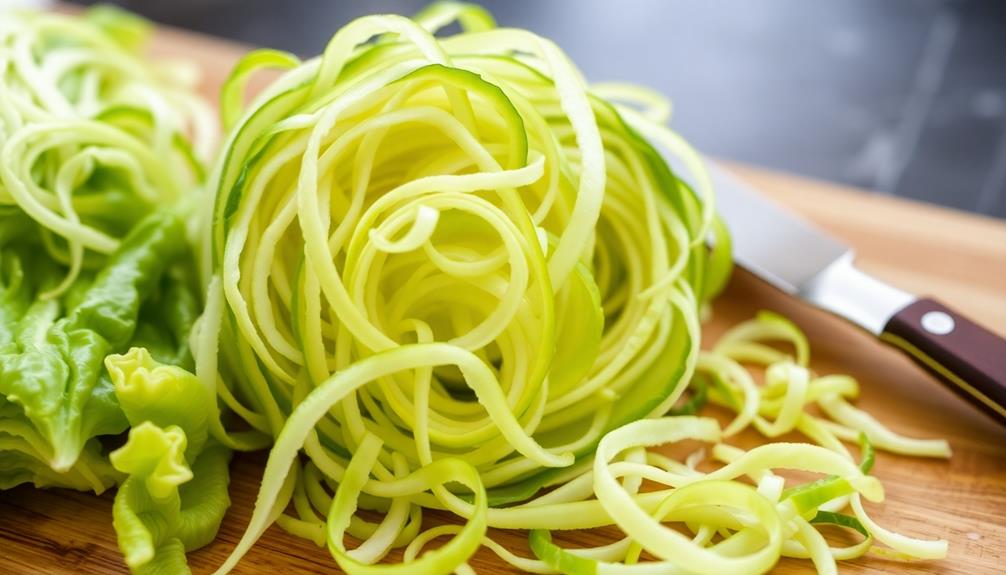
How do you go about slicing the cabbage into thin strips? First, start by removing any tough outer leaves from the cabbage.
Then, cut the cabbage in half from top to bottom. Lay each half flat-side down on your cutting board.
Using a sharp knife, thinly slice the cabbage, working from the outer edge towards the core. Make sure to keep your slices uniform, around 1/4 inch thick, for even cooking.
As you slice, the cabbage will naturally separate into delicate strips. Gather all the shredded cabbage together, then give it a quick rinse under cold water to remove any dirt or debris.
Pat the cabbage dry with paper towels or a clean kitchen towel. Now you're ready to move on to the next step – sautéing the cabbage in a delicious butter sauce.
Get ready for the flavors of this butter-braised cabbage to melt in your mouth!
Step 2. Melt Butter in a Skillet
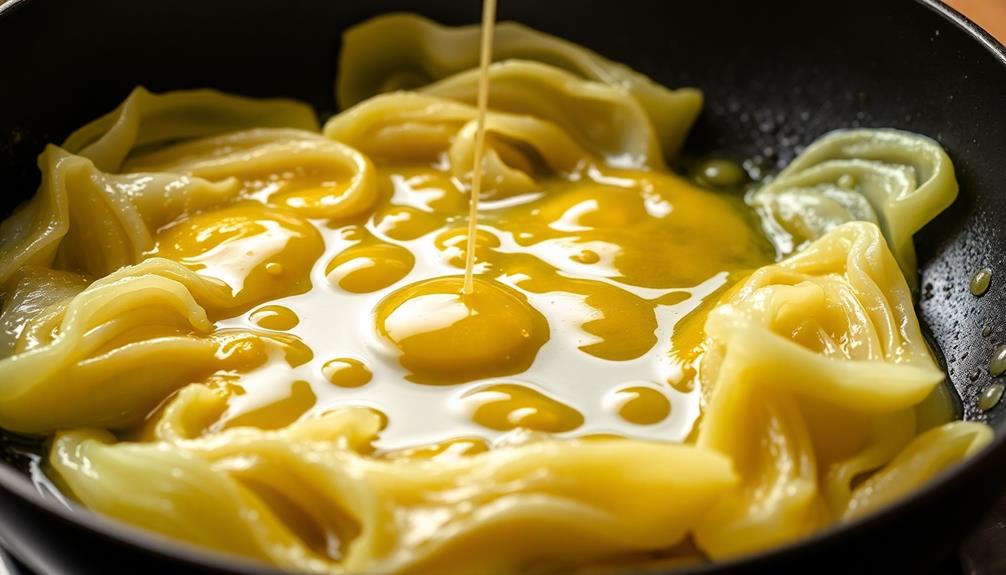
Next, melt the butter in a large skillet over medium heat. Watch as the golden nuggets of dairy delight slowly transform into a shimmering liquid, their aroma filling the air with the promise of deliciousness to come.
Tilt the pan gently, allowing the butter to coat the surface evenly. As it melts, you'll notice it beginning to foam and bubble slightly, signaling that it's reached the perfect temperature for sautéing.
Now, take a moment to inhale deeply – the rich, creamy scent of the butter will have your mouth watering in anticipation. Resist the temptation to crank up the heat, as you want to gently melt the butter rather than scorching it.
Patience is key here, as the slow, steady melting process will ensure the butter develops a lovely nutty flavor, which will perfectly complement the cabbage you're about to add.
Step 3. Add Cabbage to the Melted Butter
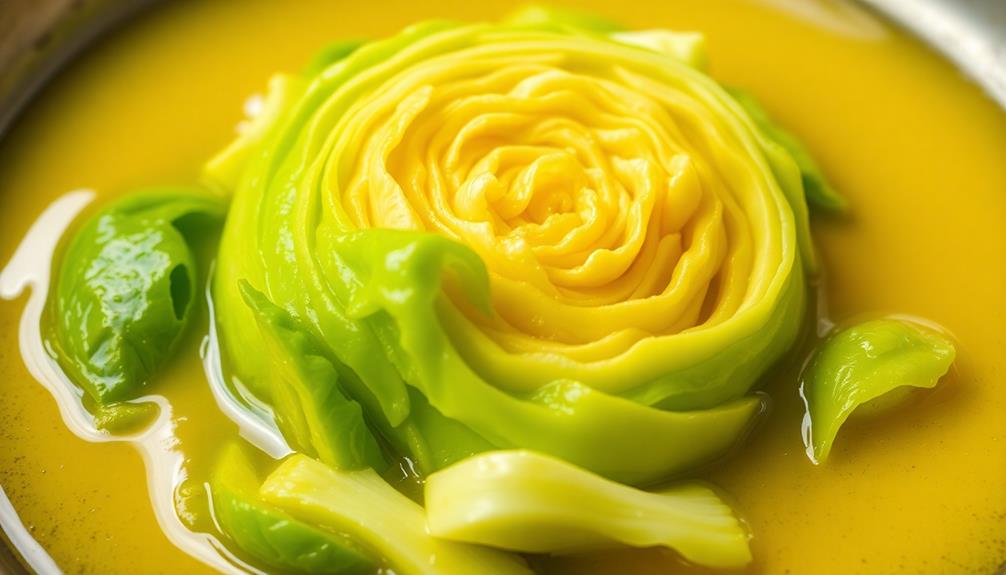
Once the butter has melted completely, add the cabbage to the skillet. The cabbage should sizzle and pop as it hits the hot fat, releasing a delightful aroma that fills the kitchen.
Gently toss the cabbage with tongs or a wooden spoon to ensure it's evenly coated in the melted butter. As the cabbage begins to wilt and soften, you'll notice it take on a vibrant, deep green hue.
Continue to stir the cabbage periodically, allowing it to slowly braise in the butter. The cabbage will gradually become tender and silky, its crunchy texture transforming into a melt-in-your-mouth delight.
Breathe in the comforting scent of the butter-braised cabbage – it's the perfect accompaniment to your main dish, lending a rich, indulgent flavor that elevates the entire meal.
With each bite, you'll savor the way the butter has infused the cabbage, creating a side dish that's truly irresistible.
Step 4. Cover and Simmer Until Tender
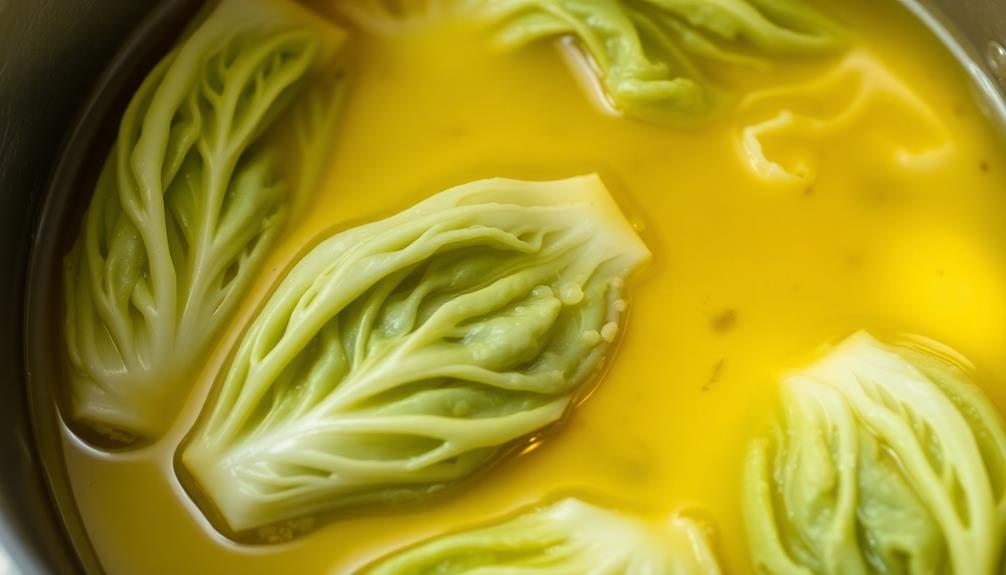
After the cabbage has been coated in the fragrant butter, cover the skillet with a lid. The lid will trap the heat and steam, helping the cabbage become beautifully tender.
Let the cabbage simmer gently over medium-low heat, stirring occasionally, for 15-20 minutes. You'll know it's done when the cabbage is melt-in-your-mouth soft, with a sweet, buttery flavor.
Keep a close eye on the cabbage, adjusting the heat as needed to maintain a gentle simmer. You don't want the butter to burn or the cabbage to become mushy. The low, slow cooking is the secret to getting that perfect texture – tender, but still with a bit of bite.
As the cabbage simmers, the kitchen will fill with an irresistible aroma, making your mouth water in anticipation. Once the cabbage is fork-tender, it's ready to serve alongside your main dish, or even as a satisfying vegetarian meal on its own.
Step 5. Garnish With Parsley Before Serving
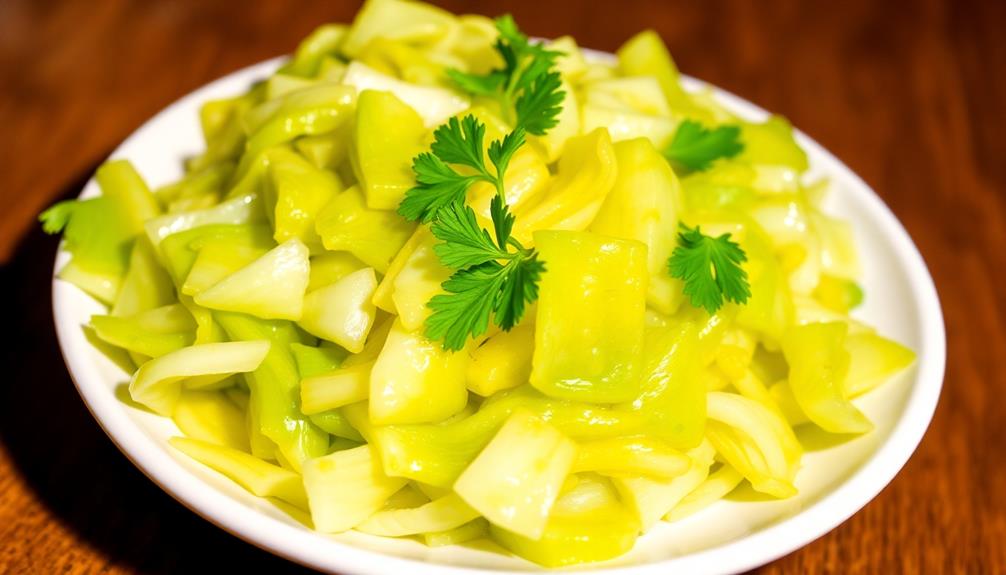
Before serving the butter-braised cabbage, give it a final flourish with a sprinkle of fresh parsley. The vibrant green leaves will add a pop of color and a lovely herbal aroma to the dish.
Gently pluck a few sprigs from the bunch, then use your fingers to delicately tear the leaves into bite-sized pieces. Scatter them evenly over the top of the tender, golden-hued cabbage. The parsley's grassy notes will complement the rich, buttery flavor, creating a harmonious balance of textures and tastes.
As your guests take their first forkful, they'll delight in the way the parsley accentuates the cabbage's natural sweetness. The fresh garnish will also lend a touch of elegance, transforming this humble side dish into a meal-worthy centerpiece.
Savor the moment as your family and friends dive in, savoring every last morsel of this comforting, flavorful creation.
Final Thoughts
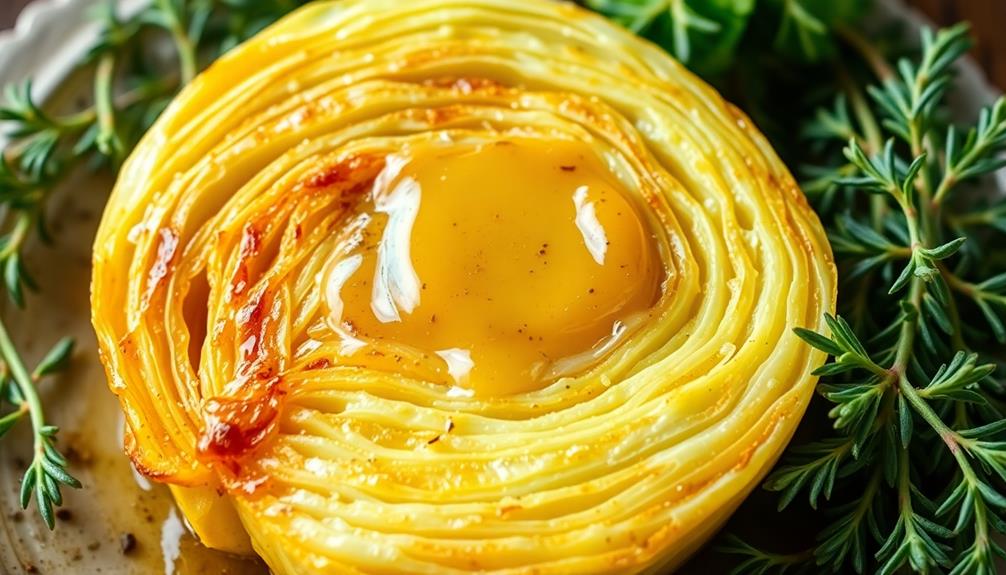
With the butter-braised cabbage now ready to serve, you can appreciate the satisfying blend of flavors and textures. The tender cabbage leaves have soaked up the rich, buttery goodness, creating a melt-in-your-mouth experience.
The slight sweetness from the caramelized edges pairs perfectly with the savory undertones, making each bite a delight. As you take your first taste, you'll be amazed at how such a simple dish can be so incredibly satisfying.
The aromatic herbs and spices add depth and complexity, while the cabbage's natural crunch provides a pleasant contrast to the overall creaminess. This side dish is sure to become a new family favorite, one that you'll crave to accompany all your main courses.
Frequently Asked Questions
Can I Use Other Types of Cabbage?
Absolutely! You can use other types of cabbage like green, red, or Napa cabbage. Each variety will offer a unique flavor and texture, so feel free to experiment and find your favorite.
How Do I Know When the Cabbage Is Done?
The cabbage is done when it's tender and easily pierced with a fork. Keep an eye on the texture and taste it periodically to ensure it reaches your desired doneness. Don't overcook it – you want it to be soft, not mushy.
Can I Make This Dish in Advance?
Yes, you can make this dish in advance. The cabbage will hold up well in the fridge for 3-4 days. Just reheat it gently before serving to preserve the tender, buttery texture.
Can I Add Other Vegetables to the Recipe?
Absolutely! You can easily add other vegetables to this dish. Try incorporating onions, carrots, or even potatoes for a heartier side. The butter and seasonings will complement the additional veggies, creating a more diverse and flavorful dish.
Is This Recipe Suitable for Vegetarians or Vegans?
The recipe is not suitable for vegetarians or vegans, as it calls for butter. To make it vegetarian-friendly, you'd need to substitute the butter with a plant-based alternative like olive oil or vegan butter. Vegans would need to do the same.
